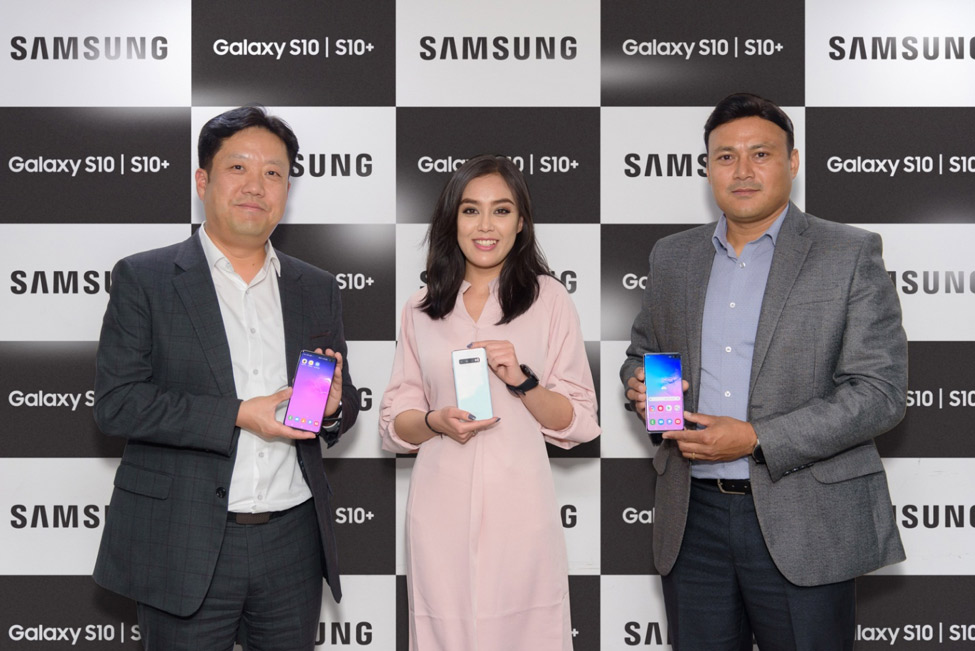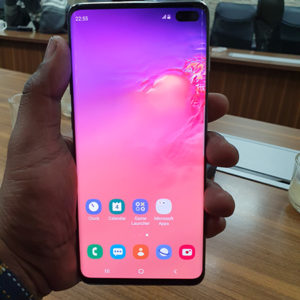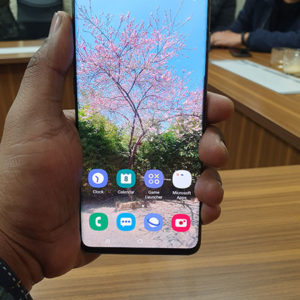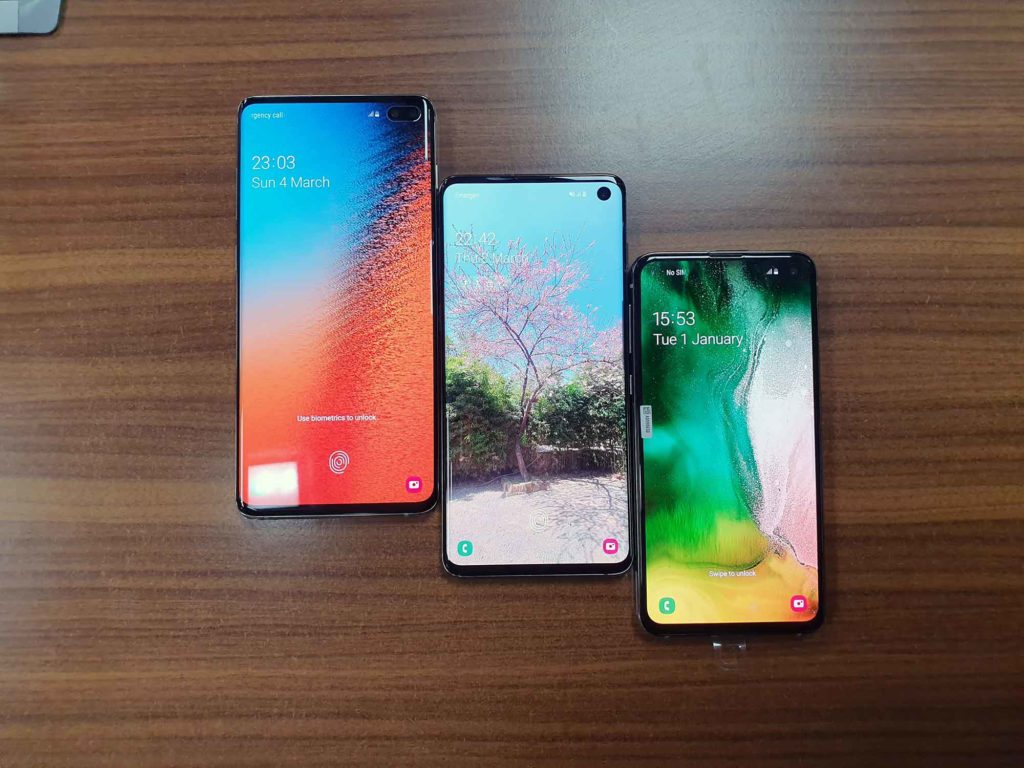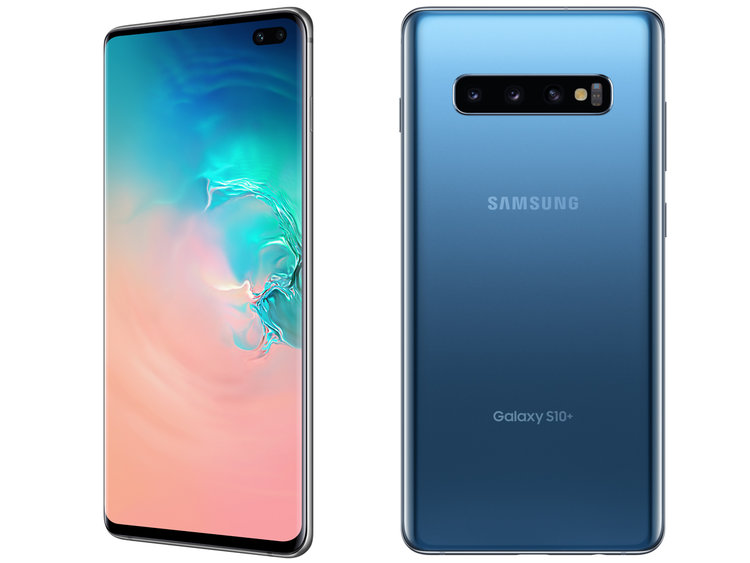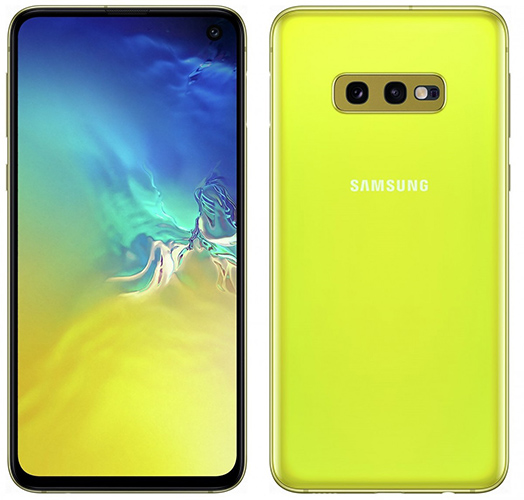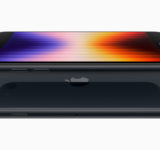After an overwhelming pre-order session the Samsung Galaxy 10 is now available for purchase in Nepal. The three flagships from Samsung can be purchased from authorized retailers starting today. The company was offering plethoras of pre-booking offers, including a free Galaxy Buds, which started from 1st of March in Nepal.
Let’s talk about what all three devices share with each other. A sleek new design, a new Dynamic AMOLED display, world’s first HDR10+ compliant screen on a mobile device, and ability to record 4K HDR10+ videos. Samsung’s all three phones also support Super Digital Stabilization and have an ultra-wide sensor for capturing wide-angle photos.
On the other hand, the Galaxy S10 and S10+ support an ultrasonic in-display fingerprint scanner which is significantly accurate than the optical fingerprint scanner seen on devices like OnePlus 6T.
Samsung Galaxy S10+
First, let’s talk about the best from the bunch, the Samsung Galaxy S10+. The handset resembles the large form factor of a Note series, minus an S-Pen. The Galaxy S10+ shines a big 6.4-inch Dynamic AMOLED display with a resolution of 1440p+ which is now more immersive and more friendly to the eyes, blocking in about 42% of blue light without any filters.
Underneath that beautiful display is a next-gen ultrasonic fingerprint scanner that scans the 3D print of your finger as opposed to the optical fingerprint scanners’ 2D image. This not only makes it advance but also accurate at the same time. Right above the display is a dual hole punch that hosts a dual selfie camera. There’s a normal 10MP sensor that can record 4K videos, while the other one is an 8MP camera used for depth sensing.
As we shift our focus to the back, we can see triple cameras that host a swath of capable sensors. The main camera has a 12MP sensor with dual pixel autofocus and optical stabilization. And as seen before, the aperture of the camera can also be shifted between f/1.5 and f/2.4. The remaining two cameras are a 12MP telephoto shooter that supports OIS and PDAF, while the other one is an ultra-wide sensor with a 123-degrees field of view — that’s as much wide as a human eye can see.
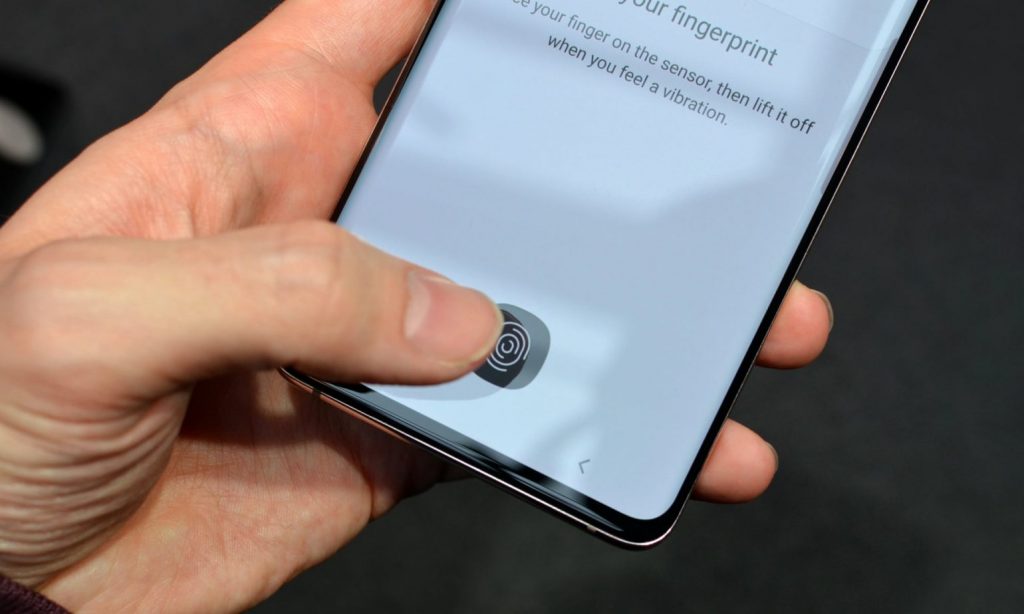
The Samsung Galaxy S10+ will be powered by Exynos 9820 chipset. What’s more exciting is that you get a variety of memory configurations. The normal one has 8GB of RAM and 128GB of internal storage, while there’s also a 512GB variant. All this with an option for expansion through microSD card up to 1.5TB. That’s some whole new level of storage for media consumption.
Screen: 6.1-inch / 6.4-inch Dynamic AMOLED display, Quad HD+ resolution in a 19:9 aspect ratio, HDR10+ compliant
Rear cameras: Triple-camera: Wide-angle 12MP (77-degree), telephoto 12MP (45-degree), and ultra-wide 16MP (123-degree)
Selfie camera: 10MP, 8MP RGB depth camera on S10 Plus
Processor: Exynos 9820
Memory: 8GB or 12GB RAM
Storage: 128GB / 512GB (1TB on S10 Plus), expandable via microSD up to 1.5TB
Battery: 3,400mAh (S10) / 4,100mAh (S10 Plus)
OS: Android 9 Pie; Samsung One UI
Price in Nepal: Rs. 1,10,900 for S10 / Rs. 1,23,900(128GB) and Rs. 1,54,500(512GB) for S10+
Pumping the juice is a huge 4,100mAh battery that supports Adaptive Fast Charge through wires(with 15W power adapter) or Fast Wireless Charging 2.0(Qi compatible). Whereas the phone also comes with Wireless PowerShare, aka reverse wireless charging that allows your S10+ to act as a wireless powerbank. Although this is not a new feature, it’s good to see that more and more company is trying to adapt it, albeit the slow charging speed.
Samsung Galaxy S10
The Samsung Galaxy S10 is the best-suited device on this list, at least for me. Despite the lower price tag it carries, the specs are pretty much similar to its bigger brother. You get a bit small 6.1-inch Dynamic AMOLED display but a same ultrasonic fingerprint scanner beneath it.
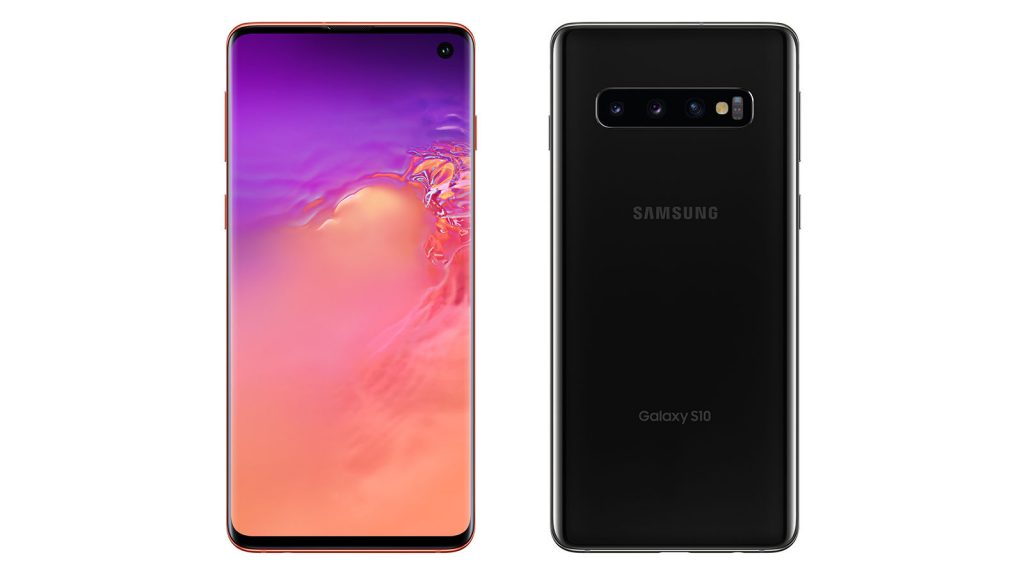
The Galaxy S10 also has a similar configuration of 8GB RAM and 128GB of 512GB of internal storage with an option for expansion. The battery, on the other hand, is downgraded to just 3,400mAh but supports the same wired and wireless charging technology.
Samsung Galaxy S10e
The Samsung Galaxy S10e is a lite version of the Plus model. And this can be clearly seen in terms of its aesthetics. The Galaxy S10e has a flat screen which was last seen on the Galaxy S7. While the display is still Dynamic AMOLED, the resolution drops down to 1080p. The in-display fingerprint scanner is also absent from the phone, instead, it has a traditional side mounted fingerprint scanner.
Screen: 5.8-inch Dynamic AMOLED display, Full-HD+ resolution in a 19:9 aspect ratio, HDR10+ compliant
Rear cameras: Dual-camera: Wide-angle 12MP (77-degree) and ultra-wide 16MP (123-degree)
Selfie camera: 10MP, f/1.9
Processor: Exynos 9820
Memory: 6GB RAM
Storage: 128GB (1TB on S10 Plus), expandable via microSD up to 1.5TB
Battery: 3,100mAh
OS: Android 9 Pie; Samsung One UI
Price in Nepal: Rs. 93,900
Similarly, there are only two cameras on the back. The main one is the 12MP sensor, whilst the ultra-wide angle has a 16MP sensor. However, the selfie camera is similar — i.e. 10MP with 4K video shooting ability.
The chipset is also similar to the normal and Plus model but its base model comes with 6GB of RAM and 128GB of storage. The battery is also a tad bit smaller — i.e. 3,100mAh but supports Wireless PowerShare and fast charging.
Talking about similarities, all these models have LTE connectivity support with speeds up to 2Gbps. All three models also support WiFi 6, has an intriguing 3.5mm headphone jack, NFC and are IP68 rated.
Wait! What’s the Price in Nepal?
Well, let’s just say that all these models will cost you premium and take a chunk out of your budget. The Galaxy S10e with 6/128GB configuration will cost you Rs. 93,900, while the Galaxy S10 will go on sale for Rs. 1,10,900. As for the Galaxy S10 Plus, it starts at Rs. 1,23,500, while the 512GB model will carry a price tag of whopping Rs. 1,54,500 in Nepal.


